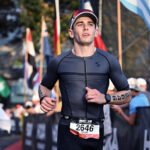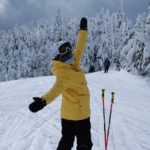From medical first to marathon finisher: Corey’s ACL story
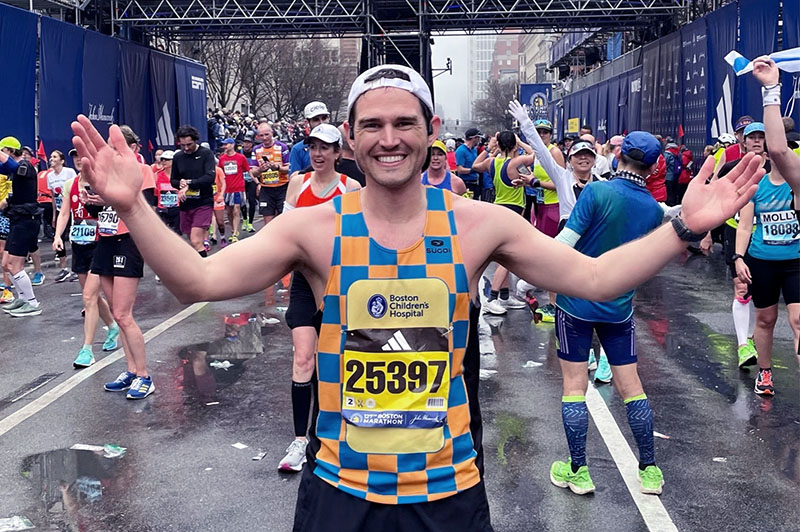
Corey Peak’s role as a “medical first” began on a ski slope in 2015 when he tore his anterior collateral ligament (ACL). He remembers falling and hearing two pops. “One side was my binding releasing. The other side, I later realized, was my ACL tearing.”
Thirty days after his accident, Corey would become the first person to undergo an experimental procedure called bridge-enhanced ACL repair (BEAR) at Boston Children’s Hospital. Eight years later, he honored the surgeons who repaired his knee by running the Boston Marathon as part of Boston Children’s Miles for Miracles team.
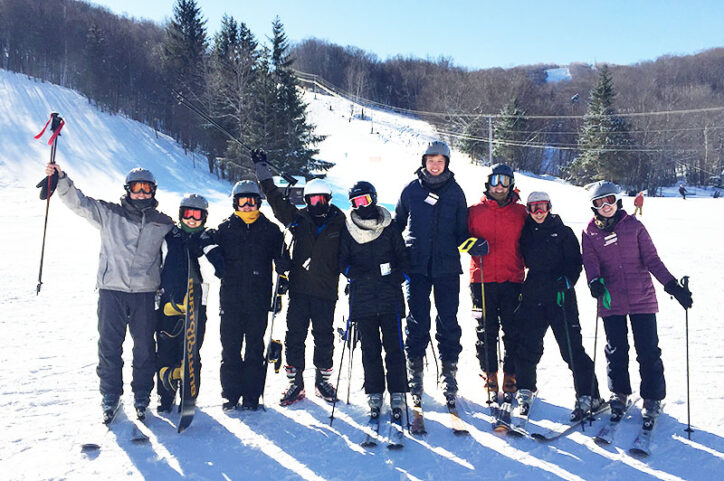
In search of a better way: 1989-2015
In 2015, ACL reconstruction was considered the gold standard in ACL repair. Nonetheless, 74 percent of people who tear their ACL develop osteoarthritis within 14 years, with or without ACL reconstruction.
As early as 1989, Dr. Martha Murray, now orthopedic surgeon-in-chief of Boston Children’s Orthopedic and Sports Medicine Center, believed there must be a better way to treat ACL injuries.
Working with a team of basic, translational, and clinical researchers at Boston Children’s, she found that an injured ACL does not heal on its own because, being inside the knee, the ligament is in a poor environment for healing. In most other tissues, blood clots between the torn edges of an injury and creates a bridge across which new tissue can form. But blood cannot clot in the fluid environment of the joint, so a bridge between the torn ends of the ACL does not form.
Could they create a scaffold to promote ACL healing? For the next 15 years, Dr. Murray and her team developed the BEAR procedure to do just that.
2015: BEAR and Corey enter a new frontier in ACL treatment
By 2015, the experimental BEAR procedure was ready to be tested in humans.
Corey was a graduate student at Harvard’s School of Public Health. Initially, when a fellow researcher told him about the BEAR trial at Boston Children’s, he didn’t take them seriously. “I was 25, the youngest person in the lab. I figured it was a joke about my age,” he says. But when he contacted the research team, they told him he was eligible.

Dr. Lyle Micheli operated on Corey’s knee 30 days after the ski accident. By then, Corey had weighed the pros and cons of the experimental procedure and received answers to his many questions. “I was thinking about what would be best for me and also how this could help advance the field so that other people would have this option.”
After surgery, his goal was to return to his previous level of activity: running half marathons, hiking, biking, and skiing. Early on, however, recovery was a matter of smaller wins, like the day he could do a full rotation on a stationary bike. “I could start to see the light at the end of the tunnel.”
Within three months, an MRI of Corey’s knee showed healing tissue in the location of his previously torn ACL.
2016-2017: Corey moves west, BEAR enrolls more patients
Corey finished up his graduate studies and moved to San Diego. By then, he was running and bike commuting. Now that he lived in the birthplace of the triathlon, he figured, why not train for one? “It was only three years after the surgery, but at that point, I didn’t have any medical reason holding me back.”
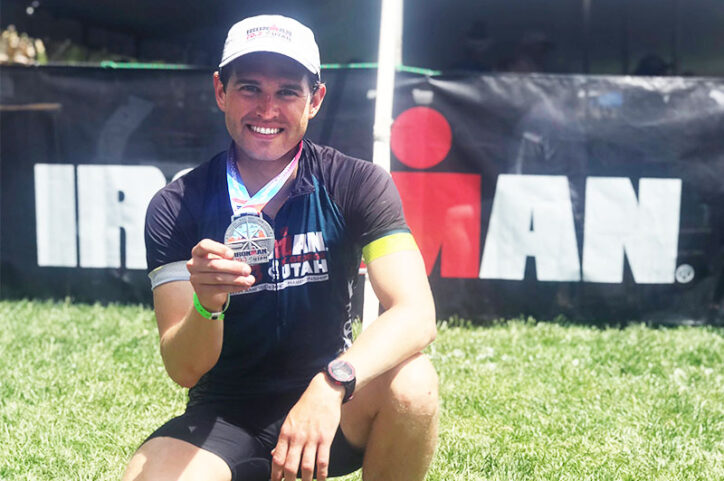
Based on the success of its first in-human clinical trial, BEAR received clearance to enroll 100 patients in a second trial.
2018-2022: Marriage and parenthood for Corey, expansion of BEAR
2018 was a big year for Corey. He completed the Ironman 70.3 St. George and got married. A few years later, he and his wife Isabella welcomed their first child.
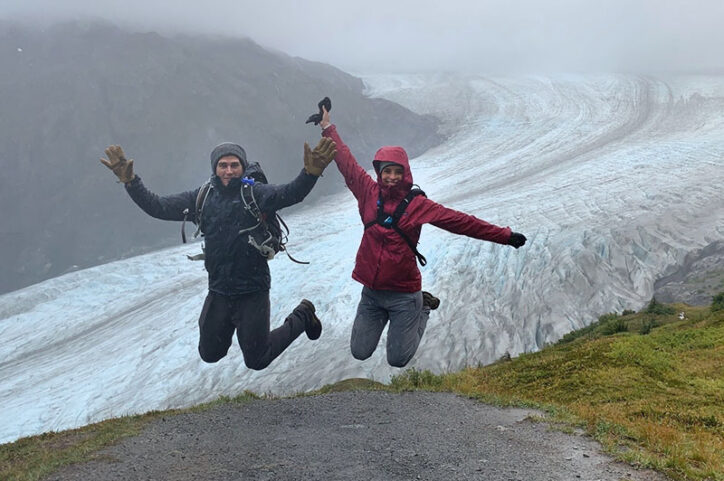
The BEAR procedure continued to gain traction. Surgeons at seven hospitals across the country were trained to perform the procedure in a third stage of clinical trials.
A study published in 2020 compared the recoveries of patients who’d undergone the BEAR procedure to those who’d had traditional ACL reconstruction. Two years after surgery, patients in both groups reported similar knee function. BEAR patients reported significantly greater hamstring strength.
2023: The Boston Marathon
Corey gets goosebumps when he thinks about the Boston Marathon. Having lived in Boston and cheered for marathon runners for five years, now he was one of them. “I was moved almost to tears by the number of strangers cheering for me and the other runners.”
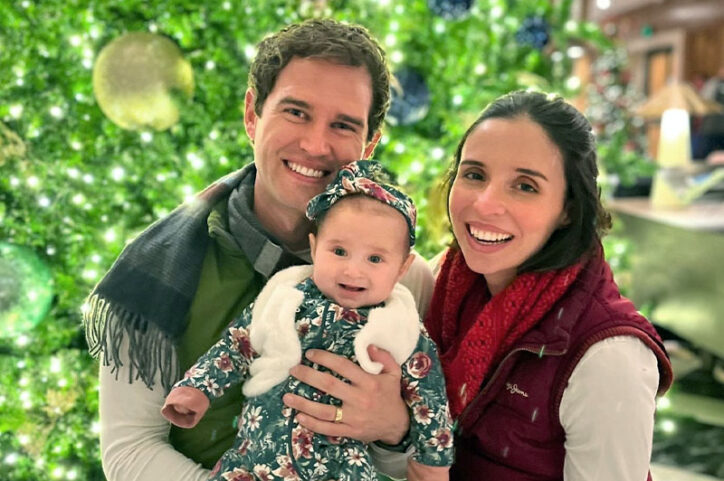
By the time he passed his wife, daughter, and brother-in-law at mile 22, Corey had run through the Wellesley Scream Tunnel and over Heartbreak Hill. By crossing the finish line, he proved his own resilience and that of the first-ever ACL to undergo bridge-enhanced repair.
“In endurance sports, you mentally cycle through the body to make sure everything’s working. And the knee didn’t cause any problems. There’s no reason I need to hold back.”
Learn more about the Orthopedic and Sports Medicine Center and Anterior Cruciate Ligament Program.
Related Posts :
-

One athlete, two hip surgeries, three Ironmans
Trevor Spence grew up playing just about every sport he could. When he was 3, he laced up his first pair ...
-

After two ACL tears, a skier reconnects with her body and her sport
The memory remains vivid in Sophia’s mind. Racing down a slalom course at top speed, she hit a patch ...
-

Sports medicine helps keep athletes in the game
Sports medicine specialist Dr. William Meehan sees a lot of sports injuries: everything from tennis elbow to concussions to anterior ...
-

Gait analysis gives runners a window into their form
Why can some runners compete in marathon after marathon while others get injured? The answer often lies in the runner’...


